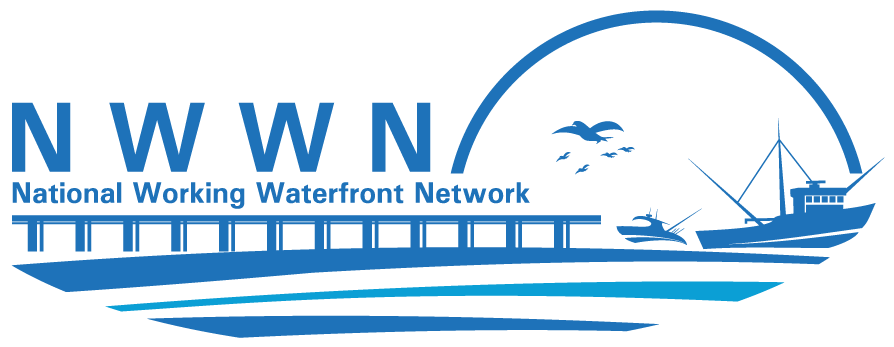Status and Trends
Working waterfronts have and will continue to evolve as changes occur in water-dependent industries and in response to other environmental, demographic and economic pressures (increasingly, global competition) and regulatory interventions. Ship and boat building and harvesting of living marine resources, for example, are two waterfront industries that were much more robust and had a more prominent presence on waterfronts in years past than today. For a description of these industries and the trends affecting them today download the report History, Status, and Trends of Working Waterfronts.
Work to Leisure
The largest share of the ocean-related economy today is tourism and recreation. Coastal tourism is often based on existing or vestigial traditional working waterfronts where the facilities and harbors of former hardworking fishing or commercial industries are now occupied by the symbols of leisure; recreational boats and charter fishing and excursion vessels. These trends are related to long-term increases in disposable income and leisure time among Americans. See the following case studies:
The coastal tourism and recreation industry comprises water-based operators, including marinas, boat dealers, cruise ships, recreational boaters, and tour operators. Tour operators conduct on-water excursions such as sightseeing tours, whale watches, charter fishing, marine park visits, kayaking, and scuba diving. These businesses require consistent access to the waterfront and many of these operators conduct several trips per day. Some businesses, such as waterfront hotels and restaurants, are considered waterfront-enhanced, i.e. they benefit from an attractive waterfront location but are not dependent on waterfront access as a requirement for operation. In addition to generating revenue through each business, these tourism operations serve as a general attraction for people to visit the waterfront, patronize various local businesses, and learn about these waterfront industries.
New Sources of Energy
The next largest sector of ocean-related activities is offshore oil and gas production whose facilities dominate ports and waterfront communities in several of the Gulf States and Southern California. Recent advances in wind and hydrokinetic energy technologies together with environmental and climate concerns related to the use of fossil fuels may change the future landscape (and seascape) in coastal communities along the Atlantic and Pacific seaboards. There is a burgeoning interest in and investments by industry and governments in offshore installations, which will require landside support facilities for deployment and ongoing operations and maintenance.
The United States coastal and offshore renewable energy industry, however, is in its infancy. Initial wind energy projects and marine hydrokinetic energy projects are in progress and vary by geography. Based on favorable regional conditions, the Pacific Northwest is moving forward with wave energy development. In contrast, the Northeast and Mid-Atlantic have focused primarily on wind energy projects. The economic viability and success of this emerging energy sector will depend on a supportive political, regulatory, and social climate, in addition to the necessary waterfront facilities. Required port characteristics, such as minimum depth, berth, horizontal and vertical channel clearance to a harbor, and minimal distance to the project site also are important. The growth of renewable energy has the potential to strengthen and expand working waterfronts as the nation seeks greater energy security.
Development pressure
Waterfront redevelopment and revitalization has been a trend in all regions of the U.S. over the last several decades. See the following case study:
This coupled with a global trend of urbanization with increasing value being placed on the aesthetic qualities of coastal waters, particularly as environmental laws have improved water quality and industries have moved away from central city waterfronts, leaving large expanses of underutilized land. See the following case study:
In many communities, former working piers and wharves have been transformed into residences, offices, hotels, and restaurants – all integral to city life. Though their edges still provide access and berthing for ferries, historic ships, recreational vessels, and an occasional workboat, their value as working waterfronts is diminished. See the following case study:
Going, going, gone
This latter trend is probably the most ubiquitous and potentially troublesome for the future of working waterfronts. Communities determined to maintain working waterfronts will need to conscientiously and wisely manage this transformation: limiting displacement of existing water-dependent uses, preserving opportunities for future water-dependent development, and ensuring that new introduced uses are compatible with a working waterfront. Examples of communities dealing with the transformation of their working waterfronts can be seen in the following case studies:
- Waterfronts Florida Program
- Portland, Maine: Balancing Maritime Uses and Waterfront Diversification through Municipal Zoning
- Transforming Marquette, Michigan’s Waterfront with Form-Based Code
- A Community-Led Endeavor to Preserve Historic Fishtown
- Balancing Fishing, Tourism, and Research in Newport, Oregon
- North Carolina Water Access Study Committee Yields Major Results in Water Access Protection
- Port of the Miami River Water Dependent Land Use Litigation Case Study
- Gloucester, Massachusetts
- Enabling Legislation in Virginia Establishes The Middle Peninsula Chesapeake Bay Public Access Authority
- Alabama Waterfront Access Study Committee Launches Waterfront Protection Effort

